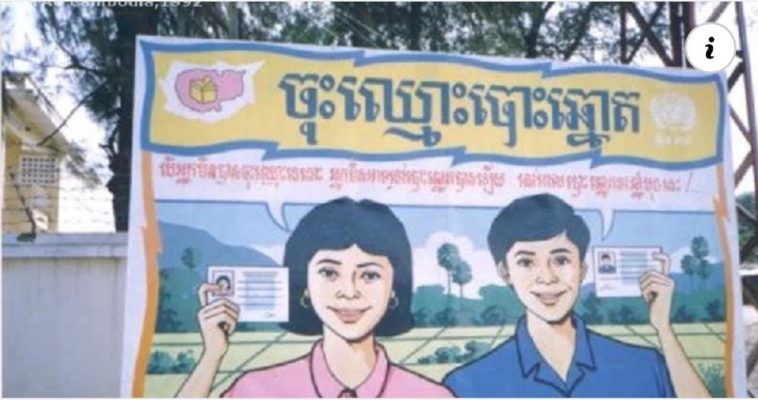What is Buddhist Socialism? And did it have any relevance to the Khmer Rouge?
Religious Socialism
Pretty much every religion has a variant that tries to combine the religious bit with the political bit. The leftist of Colombia were even formed by a Priest. Then you have the extremely influential. In theory at least it was partly to make Islam and Socialism compatible. Then there is Christian Socialism, something that makes a lot of sense if you actually read the bible. Some have also argued that North Korea and its Juche ideology have been heavily influenced by Confucianism. Although if that is true, or indeed if Confucianism is a religion are open to debate. Which brings us to Buddhist Socialism.
What is Buddhist Socialism?
Buddhist Socialism as with all other “religious” socialism aims to marry the core tenets of the religion with the politics. Again and like many religions Buddhism does share a lot with socialism.
Both Buddhism and socialism seek to provide an end to suffering by analyzing its conditions and removing the main causes of said suffering.
Are there any famous Buddhist socialists?
The most famous Buddhist socialist was the heavily overrated Dalai Lama. What many people do not realize is that he was also an avid Marxist who initially got on well with Chairman Mao.
He has said the following for example;
Of all the modern economic theories, the economic system of Marxism is founded on moral principles, while capitalism is concerned only with gain and profitability. (…) The failure of the regime in the former Soviet Union was, for me, not the failure of Marxism but the failure of totalitarianism. For this reason I still think of myself as half-Marxist, half-Buddhis
Another very prominent Buddhist Socialist was a Mr Sihanouk, hence the reason for this article.
Was Sihanouk a Socialist?
This is a very interesting topic! We know that he was very good friends with socialist leaders, such as Kim Il-Sung and Chairman Mao. We also know that he was supported, both in and out of government by Socialist regimes. Again though this does not mean he was necessarily leftist.
Sihanouk also famoulsy talked a lot about but how much did he walk the walk? Particularly seeing as he was a head of a Kingdom. Although was seen with the “three princes” of Laos, it is possible to be royal and red.
Sangkum and Buddhist Socialism
In 1955 Sihanouk stepped down as King of Cambodia to lead the country under a one party system. Namely Sangkum.
Sangkum literally means Popular Socialist Community. It was described as a movement, rather than a political party. Although the semantics of not being able to join any other political party meant Sangkum was a political party.
As we know from “National Socialism” having socialist in your title doesn’t necessarily mean you are. Therefore how socialist were Sangkum? We will cover the inner-workings of Sangkum in a different article, but for all intents and purposes it existed as pro-Sihanouk big tent party.
There were though at least some policies that could be seen as socialist. Sihanouk famously reached out to a number of communist figures, such as who served in his government. There were other future Khmer Rouge figures who also served under him. In fact it has been argued that the birth of the Khmer Rouge in 1960 was in part at least caused by a rift with those who supported collaboration with Sihanouk and those that did not.
Sihanouk and Buddhist Socialism
Sihanouk would coin various phrases such as Royal-Buddhist Socialism and Khmer Socialism, but they had little to do with actual socialism. In essence all Khmer Socialism tried to do was encourage the rich to give money to the poor. This whilst remaining a kingdom and trying to stay as neutral as possible during the Vietnam War. Both of which were to be failures.
The right’s view of Sihanouk
Whilst it is easy to look back and say Sihanouk was no socialist, that was not the opinion of the time. Whilst the Khmer Rouge are the most famous “rebels”, there was also the . The Khmer Blue believed that Sihanouk was turning Cambodia “communistic” and fought an insurgency against the regime. In 1969 they defected en-masse and in 1970 Sihanouk was overthrown in a sponsored coup by Lon Nol. So, in this respect he was certainly seen as too socialist by America. Although again that is hardly saying much.
The Khmer Rouge and Buddhist Socialism
There is much scholarly debate about whether the Khmer Rouge were communist, or even socialist. This is something we will delve into much later. They were certainly not Buddhist Socialists though. Democratic Kampuchea was officially an atheist state, with prominent Buddhist being killed by the regime. Monks were also forced to eat and drink against their dietary requirements and often in isolation.
Whatever the Khmer Rouge were though, lets say Polpotists, in some respects their hatred of religion heavily influenced how the Killing Fields played out.
The People’s Republic of Kampuchea
When Vietnam liberated Cambodia from the Khmer Rouge the Peoples Republic of Kampuchea was proclaimed. Officially at least it was on the Soviet/Vietnamese model, but with some differences.
Due to the harsh rule of the Khmer Rouge there was natural hesitance to things like collectivization and religious freedom and thus Buddhism were allowed again. In this respects perhaps those 10 years from 1979-1989 are perhaps the closest thing we have seen to Buddhist Socialism in practice.
Although today any vestiges of socialism in Cambodia are long gone, with the exception of the ruling.


